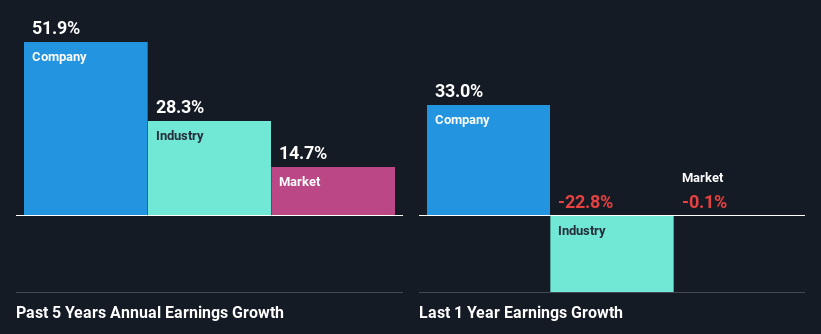Are Domain Holdings Australia Limited's (ASX:DHG) Mixed Financials Driving The Negative Sentiment?
With its stock down 7.4% over the past three months, it is easy to disregard Domain Holdings Australia (ASX:DHG). It seems that the market might have completely ignored the positive aspects of the company's fundamentals and decided to weigh-in more on the negative aspects. Stock prices are usually driven by a company’s financial performance over the long term, and therefore we decided to pay more attention to the company's financial performance. Specifically, we decided to study Domain Holdings Australia's ROE in this article.
Return on Equity or ROE is a test of how effectively a company is growing its value and managing investors’ money. In short, ROE shows the profit each dollar generates with respect to its shareholder investments.
See our latest analysis for Domain Holdings Australia
How Is ROE Calculated?
The formula for return on equity is:
Return on Equity = Net Profit (from continuing operations) ÷ Shareholders' Equity
So, based on the above formula, the ROE for Domain Holdings Australia is:
4.5% = AU$50m ÷ AU$1.1b (Based on the trailing twelve months to December 2023).
The 'return' refers to a company's earnings over the last year. That means that for every A$1 worth of shareholders' equity, the company generated A$0.05 in profit.
Why Is ROE Important For Earnings Growth?
Thus far, we have learned that ROE measures how efficiently a company is generating its profits. Based on how much of its profits the company chooses to reinvest or "retain", we are then able to evaluate a company's future ability to generate profits. Assuming all else is equal, companies that have both a higher return on equity and higher profit retention are usually the ones that have a higher growth rate when compared to companies that don't have the same features.
A Side By Side comparison of Domain Holdings Australia's Earnings Growth And 4.5% ROE
At first glance, Domain Holdings Australia's ROE doesn't look very promising. A quick further study shows that the company's ROE doesn't compare favorably to the industry average of 8.1% either. In spite of this, Domain Holdings Australia was able to grow its net income considerably, at a rate of 52% in the last five years. Therefore, there could be other reasons behind this growth. For example, it is possible that the company's management has made some good strategic decisions, or that the company has a low payout ratio.
As a next step, we compared Domain Holdings Australia's net income growth with the industry, and pleasingly, we found that the growth seen by the company is higher than the average industry growth of 28%.
Earnings growth is an important metric to consider when valuing a stock. What investors need to determine next is if the expected earnings growth, or the lack of it, is already built into the share price. This then helps them determine if the stock is placed for a bright or bleak future. What is DHG worth today? The intrinsic value infographic in our free research report helps visualize whether DHG is currently mispriced by the market.
Is Domain Holdings Australia Using Its Retained Earnings Effectively?
The high three-year median payout ratio of 95% (implying that it keeps only 5.0% of profits) for Domain Holdings Australia suggests that the company's growth wasn't really hampered despite it returning most of the earnings to its shareholders.
Moreover, Domain Holdings Australia is determined to keep sharing its profits with shareholders which we infer from its long history of six years of paying a dividend. Existing analyst estimates suggest that the company's future payout ratio is expected to drop to 63% over the next three years. The fact that the company's ROE is expected to rise to 6.7% over the same period is explained by the drop in the payout ratio.
Conclusion
On the whole, we feel that the performance shown by Domain Holdings Australia can be open to many interpretations. Although the company has shown a pretty impressive growth in earnings, yet the low ROE and the low rate of reinvestment makes us skeptical about the continuity of that growth, especially when or if the business comes to face any threats. Having said that, the company's earnings growth is expected to slow down, as forecasted in the current analyst estimates. To know more about the latest analysts predictions for the company, check out this visualization of analyst forecasts for the company.
Have feedback on this article? Concerned about the content? Get in touch with us directly. Alternatively, email editorial-team (at) simplywallst.com.
This article by Simply Wall St is general in nature. We provide commentary based on historical data and analyst forecasts only using an unbiased methodology and our articles are not intended to be financial advice. It does not constitute a recommendation to buy or sell any stock, and does not take account of your objectives, or your financial situation. We aim to bring you long-term focused analysis driven by fundamental data. Note that our analysis may not factor in the latest price-sensitive company announcements or qualitative material. Simply Wall St has no position in any stocks mentioned.

